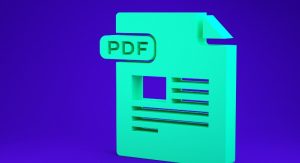In today’s fast-paced business environment, cash flow management is crucial for the success of any company. One financial tool that has gained popularity is debt factoring, also known as invoice factoring, which allows businesses to maintain a healthy cash flow by converting outstanding invoices into immediate cash. In this article, we will explore the debt factoring advantages and disadvantages, shedding light on the benefits of invoice financing and the drawbacks of debtor finance.
If you are considering debt factoring for your business, it is important to weigh these advantages and disadvantages carefully, taking into account your specific circumstances and goals. Additionally, exploring alternative financing options such as overdrafts, business loans, invoice discounting, asset finance, and trade credit may provide viable alternatives to meet your cash flow management needs.
How Debt Factoring Works?
Debt factoring, also referred to as invoice factoring, is a financial arrangement that enables businesses to enhance their cash flow management. It involves the sale of outstanding invoices to a third-party factoring company at a discount, providing immediate access to cash rather than waiting for customers to make payments. Understanding how debt factoring works is crucial for businesses considering this financing option.
When a business engages in debt factoring, they sell their invoices to a factoring company, also known as a factor. In return, the factor pays a percentage of the total invoice value upfront to the business. The factor then takes over the responsibility of collecting the full payment from the customer. This enables the business to receive immediate funds to support their operations and invest in growth initiatives.
There are two main types of debt factoring: recourse and non-recourse factoring. In recourse factoring, the business remains accountable for repaying the factor if the customer fails to make payment. On the other hand, non-recourse factoring shifts the risk of non-payment to the factor, providing added protection to the business. It’s important for businesses to carefully consider the type of factoring that aligns with their risk tolerance and financial goals.
The cost of debt factoring can vary depending on factors such as the factoring company, the type of factoring chosen, and associated risks. Factoring fees typically include a discount fee, which represents the percentage of the invoice value retained by the factor as their profit, and a service fee, which covers administrative costs and services provided by the factor. It’s essential for businesses to thoroughly evaluate the costs involved in debt factoring to ensure its financial feasibility.
Overall, debt factoring provides businesses with a valuable tool to optimize cash flow and improve their financial position. By understanding how debt factoring works, businesses can make informed decisions regarding their financing strategies and select the most suitable type of factoring that aligns with their unique needs and goals.

Debt Factoring Advantages and Disadvantages
Advantages of Debt Factoring
Debt factoring offers several advantages that can greatly benefit businesses looking to optimize their cash flow and streamline their financial operations.
- Improved Cash Flow: By utilizing debt factoring, businesses can receive immediate payment for their invoices, providing a steady and reliable source of funds. This can help meet ongoing expenses, invest in growth opportunities, and ensure smooth business operations.
- Time Savings: Debt factoring eliminates the need for businesses to spend valuable time and resources chasing down customer payments. Instead, the factoring company takes on the responsibility of collecting payments, allowing businesses to focus on core operations and customer satisfaction.
- Credit Risk Management: Non-recourse factoring offers businesses protection against bad debts. In this arrangement, the factoring company assumes the credit risk of the customers, reducing the potential financial losses and uncertainty associated with non-payment.
- Business Insights: Some factoring companies provide valuable business insights and analysis based on their expertise and access to financial data. This can help businesses gain a deeper understanding of their customers’ payment behavior, improve credit management strategies, and make informed decisions regarding future dealings.
Debt factoring can be a powerful financial tool with numerous advantages, enabling businesses to overcome cash flow challenges, save time, mitigate credit risks, and gain valuable insights for informed decision-making.
Disadvantages of Debt Factoring
While debt factoring can offer numerous benefits to businesses, it is important to consider the potential disadvantages before deciding to utilize this financing tool. Understanding the drawbacks can help business owners make informed decisions and avoid any unforeseen challenges.
- Cost: One of the main disadvantages of debt factoring is the cost involved. Factoring fees are typically charged as a percentage of the invoice value, which can eat into the business’s profits. These fees vary depending on the factoring company and the specific terms of the agreement.
- Impact on Customer Relationships: Another potential disadvantage of debt factoring is the potential impact on customer relationships. If the factoring company’s collection practices are aggressive or if customers perceive the involvement of a third-party in the payment process negatively, it can strain the relationships with those customers. Maintaining strong customer relationships is crucial for the long-term success of any business.
- Dependence on Debt Factoring for Cash Flow: While debt factoring provides immediate cash flow by converting invoices into liquid funds, there is a risk of dependence on this form of financing. Businesses may become reliant on debt factoring as a primary source of cash flow, which can become problematic if the terms change or if the business is unable to factor invoices for any reason. It is important for businesses to maintain multiple sources of cash flow to ensure financial stability.
Despite these disadvantages, debt factoring can still be a valuable tool for managing cash flow and ensuring business growth. It is essential for businesses to carefully evaluate their specific circumstances and weigh the advantages and disadvantages before making a decision.

| Disadvantages of Debt Factoring |
|---|
| Cost |
| Impact on Customer Relationships |
| Dependence on Debt Factoring for Cash Flow |
Is Debt Factoring a Good Idea?
Whether debt factoring is a good idea depends on the specific circumstances of the business. It can be a lifeline for businesses struggling with cash flow due to slow-paying customers or spending excessive time on chasing payments. However, businesses with thin profit margins or those prioritising customer relationships may need to carefully consider the costs and potential impact on customer interactions before opting for debt factoring.
“Debt factoring can provide much-needed financial relief for businesses, but it’s crucial to assess both the benefits and drawbacks before making a decision.” – Mark Thompson, Financial Consultant
Therefore, when considering debt factoring, businesses should carefully evaluate their specific circumstances, financial goals, and priorities. It’s also beneficial to explore alternative solutions to debt factoring, such as overdrafts, business loans, invoice discounting, asset finance, and trade credit. Each option has its own advantages and disadvantages, so it’s essential to choose the one that aligns best with the business’s unique needs.

Alternatives to Debt Factoring
While debt factoring can be a useful tool for managing cash flow, it’s important to explore other options before making a decision. Here are some alternatives to consider:
1. Overdrafts: Businesses may choose to utilize overdraft facilities offered by banks to cover short-term cash flow gaps. However, it’s important to be aware of high interest rates and potential effect on credit rating.
2. Business Loans: Seeking a business loan from a financial institution can provide the necessary funds to address cash flow issues. Be mindful of interest rates and repayment terms when considering this option.
3. Invoice Discounting: Unlike debt factoring, invoice discounting allows businesses to retain control of invoice collection while accessing immediate funds. However, businesses are responsible for managing credit risk and collection activities.
4. Asset Finance: Businesses can use valuable assets, such as machinery or equipment, as collateral for a loan. This alternative allows businesses to access funds while retaining ownership of the assets, but it’s important to consider the impact of asset depreciation and any associated costs.
5. Trade Credit: Negotiating longer payment terms with suppliers can provide additional breathing room for businesses struggling with cash flow. However, this option relies on the willingness of suppliers to extend credit.
Each alternative has its own unique benefits and drawbacks, so it’s crucial for businesses to carefully evaluate their specific needs and goals when choosing the most suitable option for managing cash flow.




